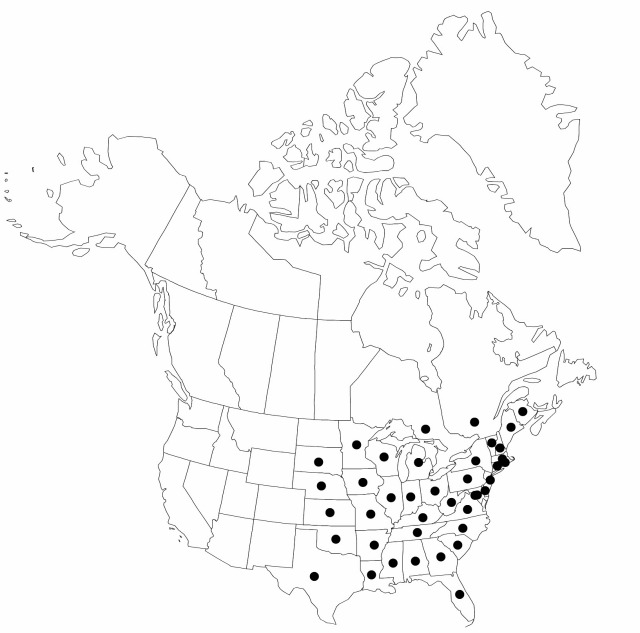Fimbristylis autumnalis
in J. J. Roemer et al., Syst. Veg. 2: 97. 1817.
Plants annual, cespitose, 5–20 (–30) cm, glabrous, plant base soft; rhizomes absent. Leaves distichous, shorter or longer than culms; sheaths keeled, entire or distally ciliate; ligule of short hairs complete; blades narrowly linear, 1–3 mm wide, flat, margin scabridciliate. Inflorescence: anthelae compound, mostly diffuse, mostly turbinate, as broad as long, ascending-branching; scapes filiform to linear, distally variously compressed, sometimes alate, 0.5–1.5 (–2) mm wide, edges scabrid; primary involucral-bract usually 1, blade exceeding or exceeded by anthela. Spikelets redbrown or brown, mostly narrowly lanceoloid to narrowly ellipsoid, 3–7 mm; fertile scales lanceolate, keeled, 1.5–2 mm, narrowly acute, glabrous, midrib excurrent as mucro. Flowers: stamens (1–) 2; styles 3-fid, slender, with 3angled base, glabrous. Achenes pale-brown, trigonousobovoid, 0.5–0.7 mm, apiculate and 3-ribbed, smooth to variably warty. 2n = 10.
Phenology: Fruiting summer–fall, all year southward.
Habitat: Moist to wet sands, peats, silts, or clays, primarily of disturbed, sunny ground such as seeps, ditches, savanna, stream banks, reservoir drawdowns, and pond shores
Elevation: 0–500(–1000) m
Distribution

N.B., Ont., Que., Ala., Ark., Conn., Del., D.C., Fla., Ga., Ill., Ind., Iowa, Kans., Ky., La., Maine, Md., Mass., Mich., Minn., Miss., Mo., Nebr., N.H., N.J., N.Y., N.C., Ohio, Okla., Pa., R.I., S.C., S.Dak., Tenn., Tex., Vt., Va., W.Va., Wis.
Discussion
Selected References
None.
Lower Taxa
"shortened" is not a number.
